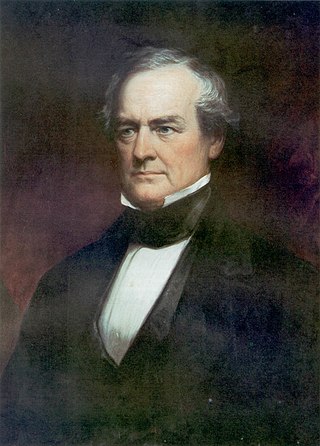Sources
- Gay, Jules. L'Italie méridionale et l'empire Byzantin: Livre I. Burt Franklin: New York, 1904.
George (died 739) was the Duke of Naples for a decade beginning in 729.
George succeeded Theodore I and continued his prudent policy of balancing between the Byzantine Empire and the papacy, at that time embroiled in a conflict over the iconoclastic controversy. He was succeeded by Gregory I.
An ancient monument dedicated to George can be found at Terracina.

Pope Sixtus I, also spelled Xystus, a Roman of Greek descent, was the bishop of Rome from c. 117 or 119 to his death c. 126 or 128. He succeeded Alexander I and was in turn succeeded by Telesphorus. His feast is celebrated on 6 April.

George II was King of Great Britain and Ireland, Duke of Brunswick-Lüneburg (Hanover) and a prince-elector of the Holy Roman Empire from 11 June 1727 (O.S.) until his death in 1760.

George VI was King of the United Kingdom and the Dominions of the British Commonwealth from 11 December 1936 until his death in 1952. He was also the last Emperor of India from 1936 until the British Raj was dissolved in August 1947, and the first head of the Commonwealth following the London Declaration of 1949.

George I was King of Great Britain and Ireland from 1 August 1714 and ruler of the Electorate of Hanover within the Holy Roman Empire from 23 January 1698 until his death in 1727. He was the first British monarch of the House of Hanover.

The monarchy of the United Kingdom, commonly referred to as the British monarchy, is the form of government used by the United Kingdom by which a hereditary monarch reigns as the head of state, with their powers regulated by the British Constitution. The term may also refer to the role of the royal family within the UK's broader political structure. The monarch since 8 September 2022 is King Charles III, who ascended the throne on the death of Queen Elizabeth II, his mother.

The House of Hanover is a European royal house with roots tracing back to the 17th century. Its members, known as Hanoverians, ruled Hanover, Great Britain, Ireland, and the British Empire at various times during the 17th to 20th centuries. Originating as a cadet branch of the House of Welf in 1635, also known then as the House of Brunswick-Lüneburg, the Hanoverians ascended to prominence with Hanover's elevation to an Electorate in 1692. In 1714 George I, prince-elector of Hanover and a descendant of King James VI and I, assumed the throne of Great Britain and Ireland, marking the beginning of Hanoverian rule over the British Empire. At the end of his line, Queen Victoria's death in 1901, the throne of the United Kingdom passed to her eldest son Edward VII, a member of the House of Saxe-Coburg and Gotha, through his father Albert, Prince Consort. The last reigning members of the House of Hanover lost the Duchy of Brunswick in 1918 when Germany became a republic and abolished royalty and nobility.

The Duchy of Brunswick and Lüneburg, commonly known as the Duchy of Brunswick-Lüneburg or Brunswick-Lüneburg, was an imperial principality of the Holy Roman Empire in the territory of present day Lower Saxony.

Earl of Winchilsea is a title in the Peerage of England. It has been held by the Finch-Hatton family of Kent, and united with the title of Earl of Nottingham under a single holder since 1729.

Earl of Huntingdon is a title which has been created several times in the Peerage of England. The medieval title was associated with the ruling house of Scotland.

Earl of Carlisle is a title that has been created three times in the Peerage of England.

Earl of Rothes is a title in the Peerage of Scotland. It was created in 1458 for George Leslie, 1st Lord Leslie. He had already been created Lord Leslie in 1445, also in the Peerage of Scotland. His grandson, the third Earl, having only succeeded his elder brother in March 1513, was killed at the Battle of Flodden on 9 September of the same year. His son, the fourth Earl, served as an Extraordinary Lord of Session. Lord Rothes was also tried for the murder of Cardinal Beaton but was acquitted.

Earl of Halifax is a title that has been created four times in British history—once in the Peerage of England, twice in the Peerage of Great Britain, and once in the Peerage of the United Kingdom. The name of the peerage refers to Halifax, West Yorkshire.

George Walker Crawford was a licensed attorney turned politician from Columbia County, Georgia. Crawford was appointed attorney general for the state in 1827, by Governor John Forsyth, serving in that capacity until 1831. Crawford also served five years in the General Assembly's lower house as a representative of Richmond County on a platform of states' rights.

Succession to the British throne is determined by descent, sex, legitimacy, and religion. Under common law, the Crown is inherited by a sovereign's children or by a childless sovereign's nearest collateral line. The Bill of Rights 1689 and the Act of Settlement 1701 restrict succession to the throne to the legitimate Protestant descendants of Sophia of Hanover who are in "communion with the Church of England". Spouses of Catholics were disqualified from 1689 until the law was amended in 2015. Protestant descendants of those excluded for being Roman Catholics are eligible.

Anhalt-Köthen was a principality of the Holy Roman Empire ruled by the House of Ascania. It was created in 1396 when the Principality of Anhalt-Zerbst was partitioned between Anhalt-Dessau and Anhalt-Köthen. The first creation lasted until 1562, when it fell to Prince Joachim Ernest of Anhalt-Zerbst, who merged it into the reunited Principality of Anhalt.

Ernest Augustus, Duke of Brunswick-Lüneburg, was Prince of Calenberg from 1679 until his death, and father of George I of Great Britain. He was appointed as the ninth prince-elector of the Holy Roman Empire in 1692.

Clan Boyle is a Scottish clan of the Scottish Lowlands.
George I was the Ecumenical Patriarch of Constantinople from 679 to 686. He was succeeded, after a one-year bishopric and interlude of a reign by patriarch Theodore I of Constantinople, by His All-Holiness Paul III of Constantinople.

The Jazz Version of "How to Succeed in Business Without Really Trying" is a 1962 album by arranger Gary McFarland of songs from the Frank Loesser musical How to Succeed in Business Without Really Trying. The album was McFarland's debut as a main artist.

The Kingdom of Kakheti-Hereti was an early Medieval Georgian monarchy in eastern Georgia, centered at the province of Kakheti, with its capital first at Telavi. It emerged in c. 1014 AD, under the leadership of energetic ruler of principality of Kakheti, Kvirike III the Great that finally defeated the ruler of Hereti and crowned himself as a king of the unified realms of Kakheti and Hereti. From this time on, until 1104, the kingdom was an independent and separated state from the united Kingdom of Georgia. The kingdom included territories from riv. Ksani to Alijanchay river and from Didoeti to southwards along the river of Mtkvari.